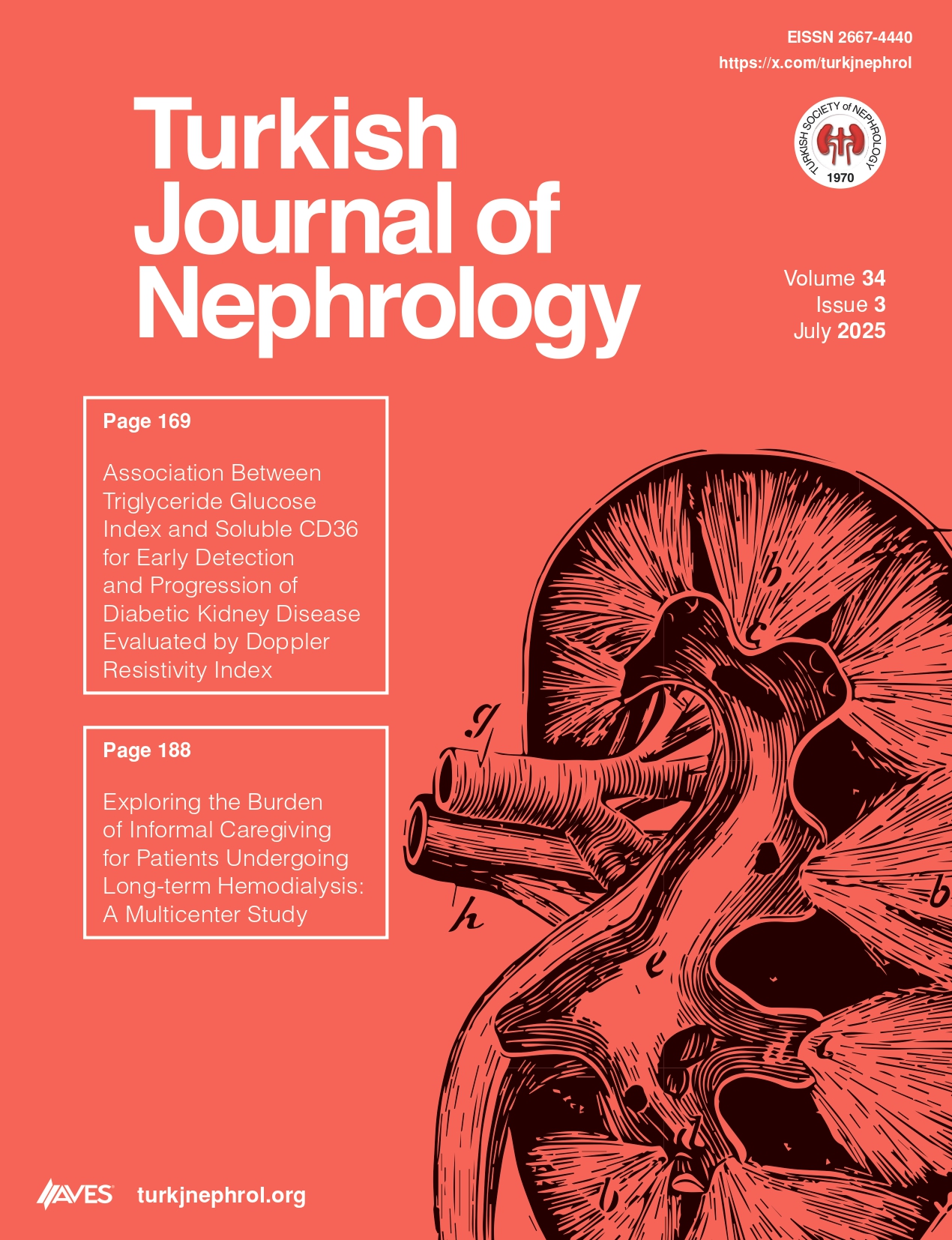Background: Type 2 diabetes mellitus (T2DM) is a prevalent public health problem with high mortality rate due to the complications it causes. However, recent data indicate that irisin may play an important role in preventing the development of T2DM and reducing the occurrence of atherosclerosis. The purpose of our study was to investigate the effect of irisin on the development of T2DM and carotid artery intima–media thickness (C-IMT), an early indicator of atherosclerosis in diabetic subjects without known cardiovascular disease (CVD).
Methods: Our study included 41 healthy volunteers and 93 patients who were followed up with a diagnosis of T2DM. Irisin levels were determined by the sandwich enzyme-linked immunosorbent assay method using the Elabscience® Human Irisin Elisa Kit H6120. C-IMT measurement was performed using a Toshiba Aplio 500 brand ultrasonography device, a B-Mode USG, and a 7.5-18 MHz linear probe. In the T2DM group, patients were divided into those with or without subclinical atherosclerosis, in addition to those with low, medium, and high irisin levels, and the results were compared.
Results: We found that patients with T2DM had significantly lower irisin levels than the healthy control group (P < .001). In our patient group, each 10-year increase in patient age increased C-IMT by 0.06 mm (95% confidence interval (CI) : 0.03-0.08) mm, and being male increased C-IMT by 0.117 mm (95% CI: 0.068-0.166). A negative linear relationship was found between C-IMT and irisin levels, which did not reach statistical significance (r = −0.145, P = .165). Compared to patients with high irisin levels, patients with low irisin levels had 0.113 mm thicker C-IMT values (0.734 ± 0.129 mm and 0.621 ± 0.140 mm, respectively, P = .004).
Conclusion: Our findings indicate that low irisin levels facilitate the development of T2DM and increase diabetic complications such as subclinical atherosclerosis and diabetic nephropathy.
Cite this article as: Akyol Tulgar B, Üstündağ A, Tunçbilek N, et al. Does irisin have an effect on the development of type 2 diabetes mellitus and the development of atherosclerosis in diabetic patients? Turk J Nephrol. Published online August 26, 2024. doi:10.5152/turkjnephrol.2024.24798.

.png)

.png)

.png)
